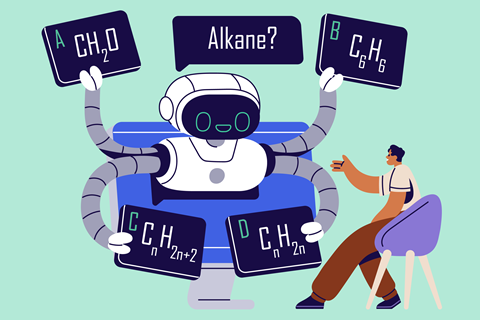Reduce your workload and produce engaging low-stakes quizzes with this accessible tool

Artificial intelligence (AI) exploded into the consciousness of many teachers in November 2022 when OpenAI released ChatGPT. This service allowed anyone with a free account to quickly make a lesson plan, summarise a document or translate chemical principles into poetry. Once the initial excitement had faded a little, many started thinking seriously about how we could use these technologies to make teaching and learning more effective.
The AI platforms I use
My favoured AI platform is Copilot from Microsoft, which I access through my school’s education licence. As such, I have free access to GPT-4 and DALL-E 3, and all my data is protected by commercial data protection. No one besides me has eyes-on access to what I put into the system, or the outputs, and nothing is saved or used to train underlying models. There are other available AI platforms, including free access to GPT-3.5 from OpenAI and Google’s Gemini.
How I use AI to create quizzes
To start, I provide a detailed prompt, telling Copilot its role, what I want and how I want the output structured. I find Dan Fitzpatrick’s PREPARE framework useful here. I’ve found that providing specification content directly to Copilot improves the quality of the output.
Next, I edit the response from Copilot to ensure I’m happy with the correct answer, and that the incorrect answers are plausible. AI can provide output that is seemingly plausible nonsense at first glance, something termed hallucinations. Two key principles for AI use at my school are: ‘have an expert human in the loop’ and ‘own the outputs from AI tools’.
Next, I import the questions and answers into Microsoft Forms, which has a very handy quick import function. This saves them into a Word document and creates the quiz directly. In class, I send the quiz to my students and, once completed, we talk through their responses. Microsoft Forms provides simple analysis of their answers in pie-chart format. If you include written answer questions, the system will also create word clouds which highlight common ideas – helpful for picking out misconceptions.
Making the most of AI
In summary, AI can be a real asset for reducing workload and producing interesting resources. However, as with any new technology, it takes time to learn to use it effectively before achieving time savings. We must also remain in the loop to quality assure what it produces and what we then use in our classrooms.
More like this
- What will your classroom look like in 2044? Discover the AI-enabled science classroom of the future …
- Use these five teacher-tested tips to use AI to simplify teaching tasks and reduce your workload.
- Find out how to perfect your lesson plans using AI.














No comments yet